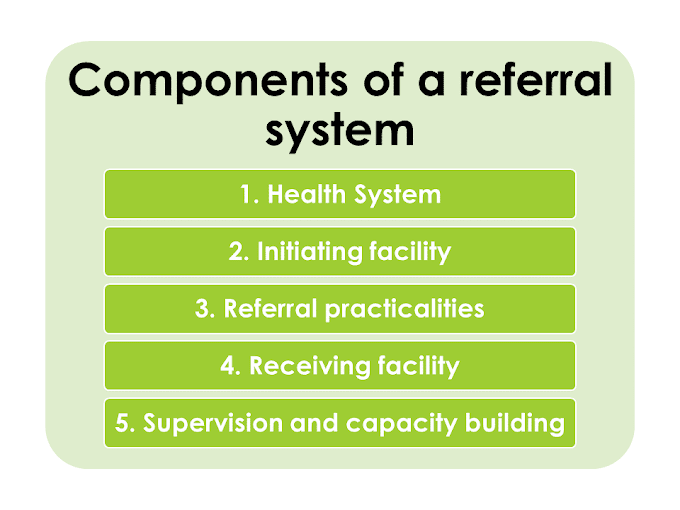- Malpractice is a type of negligence; failure to meet the standards of acceptable care, which results in harm to another person.
- Negligence: Conduct that falls below a standard of care; failure to meet a client’s needs either willfully or by omission or failure to act.
- Values: Beliefs and attitudes that may influence behavior and the process of decision making.
- Autonomy, nonmaleficence, beneficence, justice, veracity, and fidelity are the ethical principles.
- Veracity: The obligation to tell the truth.
- Fidelity: The duty to do what one has promised.
- An ethical dilemma occurs when there is a conflict between two or more ethical principles.
- Ethical dilemmas may occur as a result of differences in cultural or religious beliefs.
- An important nursing responsibility is to act as a client advocate and protect the client's rights.
- The nurse must follow the guidelines identified in the nurse practice act and agency policies and procedures when delivering client care.
- Battery is an intentional touching of another’s body without the others consent.
- Invasion of privacy includes violating confidentiality, intruding on private client or family matters, and sharing client information with unauthorized persons.
- Defamation is a false communication that causes damage to someone’s reputation, either in writing (libel) or verbally (slander).
- Fraud results from a deliberate deception intended to produce unlawful gains.
- Assault occurs when a person puts another person in fear of a harmful or offensive contact.
- False imprisonment occurs when a client is not allowed to leave a health care facility when there is no legal justification to detain the client.
- False imprisonment occurs when restraining devices are used without an appropriate clinical need.
- Organ donor client must be free of infectious disease and cancer.
- Informed consent is the client's approval to have his or her body touches by a specific individual.
- Consents, or releases are the legal documents that indicate the client’s permission to perform surgery, perform a treatment or procedure, or give information to a third party.
- A consent must be signed freely by the client without threat or pressure and must be witnessed. (Witness must be an adult).
- A competent client older than 18 years of age must sign the consent.
- During giving the consent the client must be mentally and emotionally competent.
- In most states, when a nurse is involved in the informed consent process, the nurse is witnessing only the signature of the client on the informed consent form.
- Mentally or emotionally incompetent client for consent. Client who declared incompetent. Unconscious client. Client under the influence of chemical agents such as alcohol or drugs. Chronic dementia or other mental deficiency that impairs thought processes and ability to make decisions.
- A client may have the rights to withdraw consent at any time.
- An informed consent is a legal document, and the client must be informed, in understandable terms, of the risks and benefits of surgery, treatments, procedures, and plan of care. The client needs to be a participant in decisions regarding health care.
- Types of consents: (a) Admission agreement (b) Immunization consent (c) Blood transfusion consent (d) Surgical consent (e) Research consent (f) Special consent.
- A minor is a client under legal age as defined by state statute. (usually younger than 18 years).
- A minor may not give legal consent, and consent must be obtained from a parent or the legal guardian.
- An emancipated minor is considered legally capable of signing an informed consent.
- The nurse should never carry out a prescription, if it is unclear or inappropriate. The physician should be contacted immediately.
- Do not resuscitate (DNR) orders is an order written by a physician when a client has indicated a desire to be allowed to die if the client suffers cardiac or respiratory arrest.
- Authority is the legitimate power or official right to act.
- Delegation is a process of transferring a selected nursing task in a situation to an individual who is competent to perform that specific task.
- Leadership is an interpersonal process that involves influencing others (followers) to achieve goals.
- Management is the accomplishment of tasks or goals by oneself or by directing others.
- Prioritizing means deciding which needs or problems require immediate action.
- Client-focused care is also known as the total care or case method; a registered nurse assumes total responsibility for planning and delivering care to a client.
- Accountability is the process in which individuals have an obligation (or duty) to act and are answerable for their actions.
- Accountability is accepting responsibility for one's actions. A nurse is always responsible for his or her actions when providing care to a client.
- Leadership is the interpersonal process that involves influencing others to achieve goals.
- Management is the accomplishment of tasks or goals by oneself or by directing others.
- Charismatic, quantum, relational, servant, shared, transactional, and transformational are the theory of leadership and management.
- Transactional theory is based on the principles of social-exchange theory.
- Charismatic theory is based on personal beliefs and characteristics.
- Transformational theory is based on the individual’s commitment to the health care agency's vision and focuses on promoting change.
- Quantum theory is based on the concepts of chaos theory; maintaining a balance between tension and order prevents an unstable environment and promotes creativity.
- Autocratic, democratic, laissez-faire, situational, and bureaucratic are the approaches of leadership and management.
- Effective communicator, credible, critical thinker, initiator of action, risk taker, and is persuasive and influences employees are the qualities of effective leader and manager.
- Planning, organizing, directing, and controlling are the functions of management.
- Power is the ability to do or act to achieve desired results.
- A nurse must follow policies, procedures and protocols of the health care agency in which he or she is employed.
- Quality improvement processes improve the quality of care delivery to clients and the safety of health care agencies.
- Unfreezing, moving and changing, and refreezing are the three elements for successful change. (Lewin's basic concept)
- Discharge planning begins when the client is admitted to the hospital or health care facility.
- Mitigation, preparedness, response, and recovery are the four phases of disaster management.
- Emergency department triage system: (a) Emergent-Red, (b) Urgent-Yellow, (c) Nonurgent-Green.
- Normal adult calcium level is 8.6 to 10 mg/dL.
- The normal adult magnesium level is 1.6 to 2.6 mg/dL.
- Magnesium required for the use of adenosine triphosphate as a source of energy.
- The normal adult potassium level is 3.5 to 5.1 mEq/L.
- The normal adult phosphorus level is 2.7 to 4.5 mg/dL.
- The normal adult sodium level is 135 to 145 mEq/L.
- Intravascular compartment refers to fluid inside a blood vessel. It is 6% of total body fluid.
- Intracellular compartment refers to all fluid inside the cell. It is the 70% of total body fluid.
- The extracellular compartment refers to fluid outside the cell. It is 30% of total body fluid.
- The extracellular compartment includes the interstitial, intravascular, and transcellular fluid.
- Interstitial fluid is 22% of total body fluid.
- The transcellular fluid is the fluid in cerebrospinal canals, lymphatic tissues, synovial joints, and in the eyes. It is 2% of total body fluid.
- Edema is an excess accumulation of fluid in the interstitial space.
- Generalized edema is also called anasarca.
- Total body fluid amounts to about 60% of body weight in the adult, 55% in the older adult, and 80% in the infant.
- Hydrostatic pressure is the force exerted by the weight of a solution.
- Osmolality refers to the number of osmotically active particles per kilogram of water; it is the concentration of solution.
- The normal osmolality of plasma is 270 to 300 milliosmoles/kilogram water.
- About 10 mL of water is released by the metabolism of each 100 calories of fat, carbohydrates, or proteins.
- Water loss through skin and lungs is called insensible loss.
- The client with diarrhoea is at high risk for a fluid and electrolyte imbalance.
- Antidiuretic hormone regulates the osmotic pressure of extracellular fluid by regulating the amount of water reabsorbed by the kidney.
- Aldosterone controlling extracellular fluid volume by regulating the amount of sodium reabsorbed by the kidney.
- Hypotonic overhydration is known as water intoxication.
- Hyponatremia precipitates lithium toxicity in a client taking lithium.
- Bacon, butter, canned food, cheese such as American or cottage cheese, Ketchup, lunch meat, milk, mustard, processed food, snacks, soy sauce, table salt, and white and whole-wheat bread are the common food source of sodium.
- Avocado, banana, carrots, fish, mushrooms, oranges, potatoes, pork, beef, raisins, spinach, strawberries, and tomatoes are the common food sources of potassium.
- Potassium is never administered by IV push, intramuscular, or subcutaneous routes. IV potassium is always diluted and administered using an infusion device.
- ST depression, shallow, flat or inverted T wave, and prominent U wave are seen in hypokalemia.
- Tall peaked T waves, flat P waves, widened QRS complexes, and prolonged PR intervals are seen in hyperkalemia.
- Prolonged ST interval, and prolonged QT intervals are seen in hypocalcemia.
- Shortened ST segment, and widened T wave are seen in hypocalcemia.
- The maximum recommended infusion rate of potassium is 5 to 10 mEq/hr, never to exceed 20 mEq/hr under any circumstances.
- Potassium infusion can cause phlebitis, so the nurse assesses the IV site frequently.
- Monitor the serum potassium level closely when a client is receiving a potassium-sparing diuretic.
- Painful muscle spasms in the calf or foot during the period of inactivity, positive trousseau's and Chvostek’s signs, hyperactive deep tendon reflexes, anxiety and irritability are the signs of hypocalcemia.
- Diminished or absent deep tendon reflexes are seen in hypercalcemia.
- Chvostek's sign is contraction of facial muscles in response to a light tap over the facial nerve in front of the ear.
- Trousseau's sign is a carpal spasm induced by inflating a blood pressure cuff.
- A client with a calcium imbalance is at risk for a pathological fracture. Move the client carefully and slowly; assist the client during ambulation.
- Normal serum magnesium level is 1.6 to 2.6 mg/dL.
- Calcium gluconate is the antidote for magnesium overdose.
100 Nursing Bullets Fundamentals of Nursing
Footer Menu Widget
Created by Website Designer In India | Distributed by Blogger Templates





0 Comments